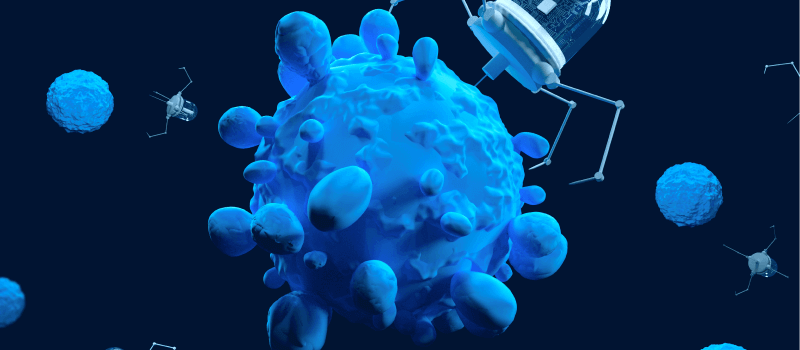Cancer is a leading cause of death worldwide, and traditional treatments such as surgery, radiation, and chemotherapy often have severe side effects. Nanotechnology offers a promising approach to developing more effective and less toxic cancer therapies.
What is Nanotechnology?
Nanotechnology is the engineering of materials and systems at the nanoscale, which is the scale of one billionth of a meter. At this nanoscale, materials can exhibit unique properties that are not seen in their bulk form. These properties can be harnessed to develop new and innovative technologies, including cancer therapies.
How Nanotechnology is Being Used to Treat Cancer
Nanotechnology is being used to develop a variety of cancer therapies, including:
- Nanocarriers: Nanocarriers are tiny particles that can be used to deliver drugs directly to tumor cells. This can help to reduce the amount of drug that reaches normal tissues, thereby reducing side effects.
- Nanosensors: Nanosensors can be used to detect cancer cells and other biomarkers of cancer. This can help to diagnose cancer earlier and more accurately.
- Nanoparticles: Nanoparticles can be used to destroy cancer cells. Nanoparticles can be designed to absorb light or heat, which can then be used to kill cancer cells.
Benefits of Nanotechnology for Cancer Therapy
Nanotechnology offers a number of benefits for cancer therapy, including:
- Improved drug delivery: Nanotechnology can be used to deliver drugs directly to tumor cells, which can help to reduce side effects and improve the efficacy of treatment.
- Early cancer detection: Nanotechnology can be used to detect cancer cells earlier and more accurately, which can lead to earlier treatment and better outcomes.
- Targeted cancer treatment: Nanotechnology can be used to target cancer cells specifically, which can help to reduce damage to normal tissues.
- New cancer therapies: Nanotechnology is leading to the development of new and innovative cancer therapies, such as immunotherapy and gene therapy.
Nanotechnology for Cancer Treatment
- Targeted drug delivery: Nanoparticles can encapsulate and deliver anticancer drugs directly to tumor cells, minimizing damage to healthy tissues.
- Stimuli-responsive drug release: Nanoparticles can be designed to release drugs only at the tumor site, improving the therapeutic index.
- Enhanced imaging: Nanoparticles can be used as imaging agents to detect cancer cells with greater sensitivity, leading to earlier and more accurate diagnosis.
- Novel treatment options: Nanotechnology is enabling the development of new cancer treatments, such as photothermal therapy, which uses nanoparticles to heat and destroy tumor cells.
Challenges of Nanotechnology for Cancer Therapy
Despite the many benefits of nanotechnology for cancer therapy, there are also some challenges that need to be addressed, including:
- Safety: Some nanoparticles can be toxic, and more research is needed to ensure the safety of nanotechnology-based cancer therapies.
- Efficacy: Some nanotechnology-based cancer therapies have not been shown to be effective in clinical trials.
- Cost: Nanotechnology-based cancer therapies can be expensive, and more research is needed to develop more affordable therapies.
Future of Nanotechnology for Cancer Therapy
Nanotechnology is a rapidly evolving field, and there is much promise for the future of nanotechnology-based cancer therapy. Researchers are developing new and innovative nanotechnologies that have the potential to revolutionize cancer treatment.
Conclusion
Nanotechnology is a promising approach to developing more effective and less toxic cancer therapies. While there are still some challenges that need to be addressed, the potential benefits of nanotechnology for cancer therapy are significant. As research continues, we can expect to see nanotechnology play an increasingly important role in the fight against cancer.
